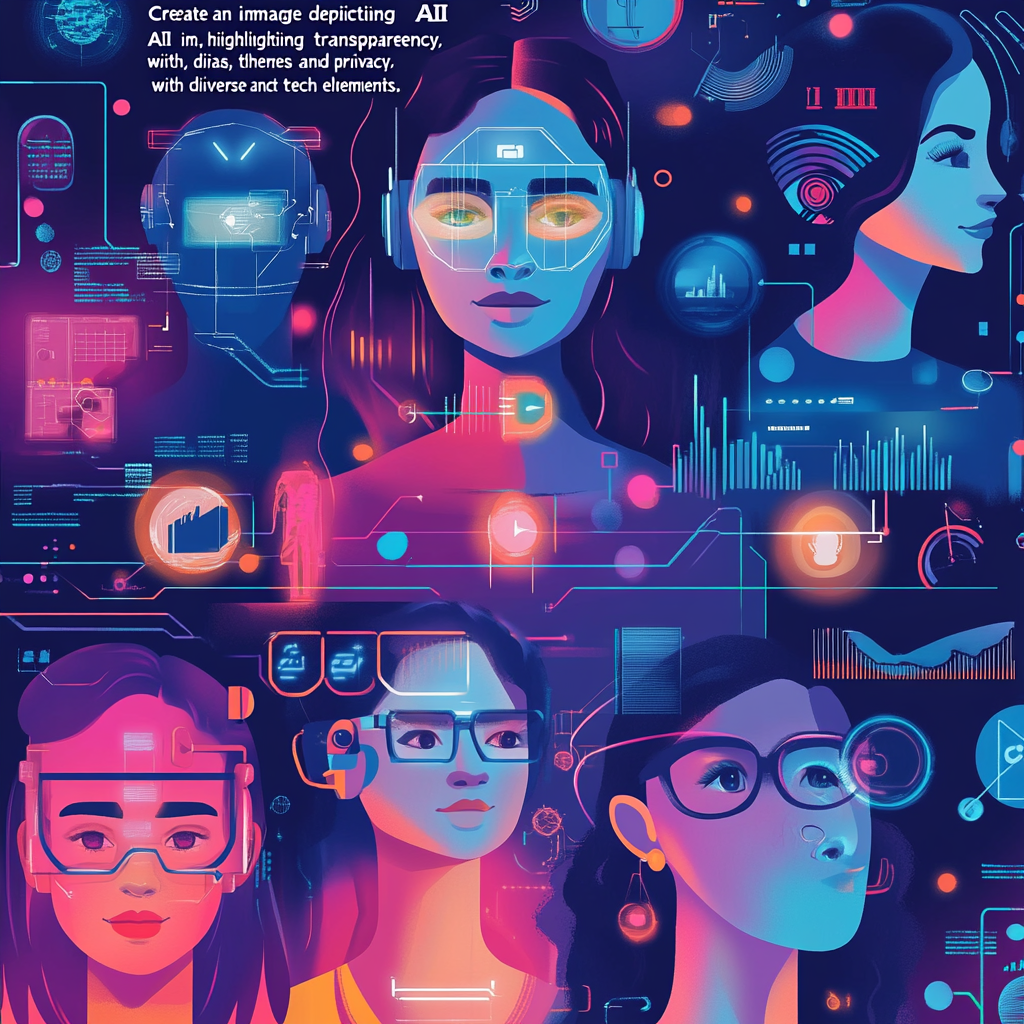
Navigating the Ethical Waters of AI in HR: Balancing Innovation with Integrity
The Ethical Tightrope of AI in HR: Balancing Innovation with Integrity
Welcome to the brave new world of human resources, where the lines between human intuition and artificial intelligence blur in the most fascinating ways. Imagine HR processes that hum along like a well-oiled machine: recruitment powered by algorithms, performance reviews analyzed with precision, and employee relations enhanced through predictive analytics. But before we dive headfirst into this brave new world, let’s not forget that innovation, while thrilling, doesn’t come without its ethical minefields. Buckle up as we embark on a tour through the essential ethical considerations that should accompany AI’s encroachment into the HR arena.
1. The Bias Wave: When Algorithms Echo Our Flaws
Let’s face it, AI isn’t a magical solution; it’s a reflection of us. When we toss our historical data into the algorithm, it can become a fountain of bias rather than wisdom. It’s akin to digging up fossils of outdated beliefs, only to have them resurrected as modern-day norms! Have you heard of the infamous incident where an AI hiring tool showed a clear preference for male candidates? Spoiler alert: it’s not a bug; it’s a feature—of a flawed dataset. Below are some eyebrow-raising examples of bias:
- Algorithms perpetuating gender stereotypes in job classifications [3]
- Historical performance data that enchants outdated management styles [4]
- Reinforcing gender norms like the “nurturing nurse” or “stoic engineer” [3]
How do we tackle this swirling pool of bias? Innovative companies like Salesforce are employing AI safeguards to examine and rectify bias. Meanwhile, BASF has taken it a step further by using virtual humans to stress-test datasets for racial and gender parity—this isn’t just progress; it’s a revolution in ethical hiring practices [1].
2. Transparency: Letting the Light In
Why Your Workforce craves Clear Communication
Here’s an eye-opener: only 38% of employees feel at ease with AI used in HR processes, primarily due to the ominous clouds of opacity that surround it. Imagine trusting a cloaked figure to tell you your worth based on a bunch of unseen metrics. The human eye wanes towards the unknown, and HR must remedy this by shedding light on the black box of AI. Some crucial elements to disclose include:
- How candidate attributes are weighted in decisions
- Metrics evaluated during performance appraisals
- Data sources that fuel the algorithms
But how do we accomplish this? Start by documenting decision-making logic and offering clarity on AI outcomes. BASF’s virtual human simulations provide a nifty example of this approach—testing system fairness through relatable yet fictitious scenarios [1]. True accountability comes from demystifying the decision-making process.
3. Privacy: A Digital Tightrope
In an age where AI thrives on data, privacy concerns are like a persistent itch we can’t ignore. Consider the implications of AI mining employee sentiment, surveilling productivity, and predicting who might leave the organization. Think about these practical examples:
- Chatbots logging sensitive mental health conversations during evaluations
- Real-time productivity tools capturing every keystroke
- Monitoring social media activity for insights into engagement
You’ll find a staggering 85% of employees uneasy about data security, according to PwC’s research—an explosive red flag that cannot be ignored. The EU’s AI Act marks HR analytics as a high-risk territory, imposing stringent compliance. Companies must rise to the occasion by:
- Ensuring GDPR compliance in their data handling policies
- Setting up frameworks for employee consent
- Conducting routine audits of third-party vendors
4. Accountability: Who’s at the Helm of the Ship?
Here’s a sobering reality: the outputs of AI are probabilistic, not certainties. When things go haywire, who takes the fall? It’s a tough question that garners different responses from various stakeholders:
- HR leaders: Responsible for scrutinizing tools and overriding erroneous decisions
- Technological developers: Tasked with embedding bias mitigation into their systems
- Employees: Should be empowered with grievance mechanisms for clashing outcomes
Organizations like ADP are ahead of the curve, establishing AI ethics councils to ensure alignment between technology and company values. Accountability doesn’t mean eliminating the human element; it’s about enhancing it with a robust ethical framework [5].
5. The Governance Challenge: Navigating Regulatory Currents
The EU’s AI Act has sent ripples across the globe, putting HR in a tight spot as regulations shift. Companies must continually adapt, making it essential for HR to:
- Engage actively in policy-making discussions (a shockingly low 37% currently do, according to SHRM) [2]
- Create and uphold internal ethics charters
- Employ ongoing risk management processes [4]
Insider Tip: Take a page from the Salesforce AI Guardrails playbook, which tracks bias metrics in real-time for proactive corrections. Just imagine having a digital compass in the murky waters of HR tech [1].
6. The Bright Horizon of HR: Augmenting People, Not Replacing Them
Generative AI has its strengths, particularly in tasks demanding fast pattern recognition and synthesis. However, the core of HR lies within human interaction. Let AI take up the mundane aspects so that humans can shine through in their capacities:
- Automatically sifting through CVs to uncover hidden talent
- Crunching engagement data to tailor personalized retention strategies
- Creating robust diversity reports to spotlight areas for growth
But let’s make it clear: never let it:
- Take over empathetic employee engagements
- Undermine intuition during weighty decisions
- Claim dominance in ethical quandaries
Your Next Move: The Journey Doesn’t End Here
AI in HR is not about merely boosting productivity; it’s about elevating human potential in the workplace. If you want to stay ahead of this dynamic landscape—full of ethical frameworks, compliance strategies, and cutting-edge tools—be sure to subscribe to our Telegram channel: @ethicadvizor. Together, we can navigate the turbulent waters of technological evolution, with ethics firmly steering our ship.

